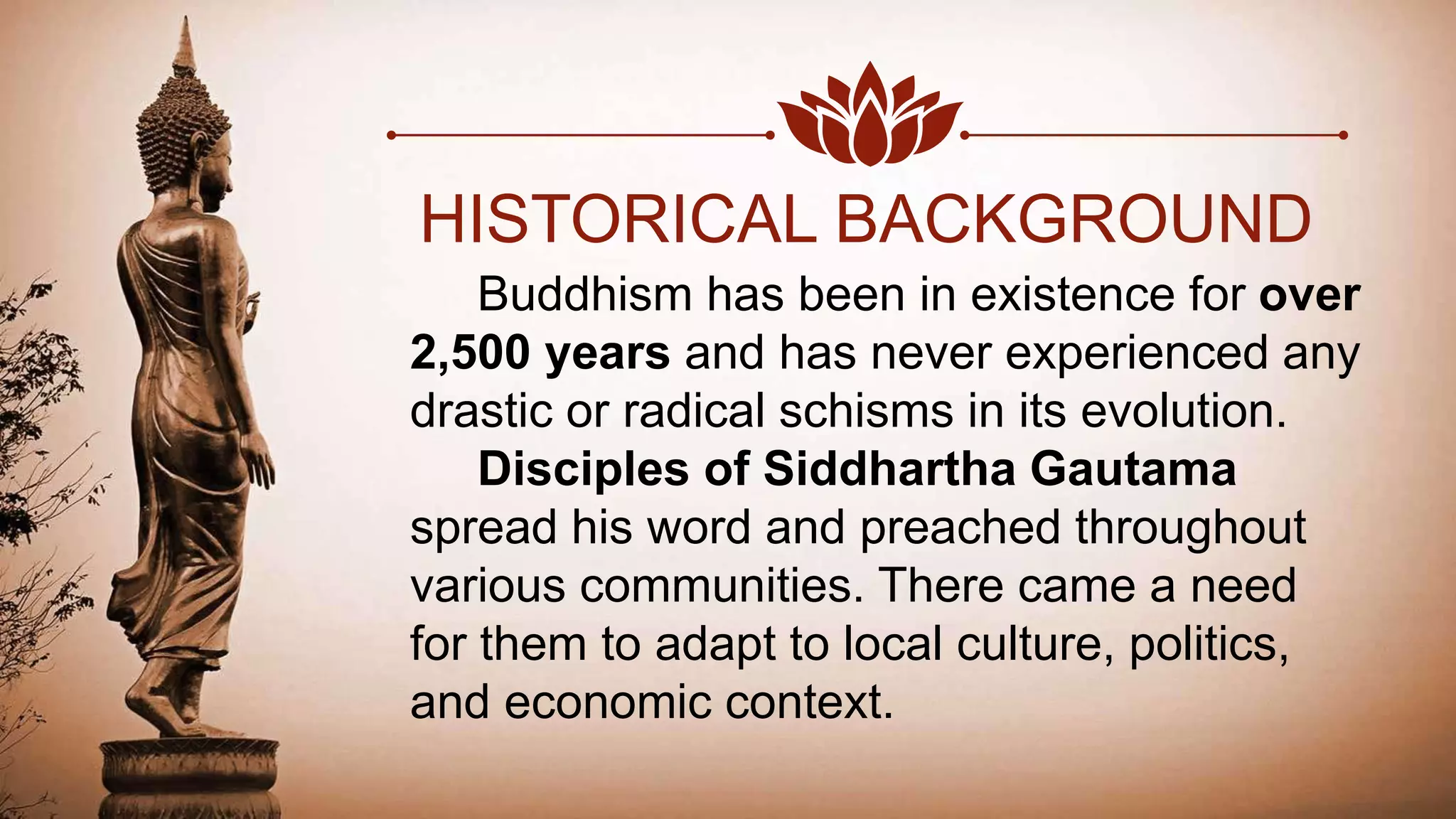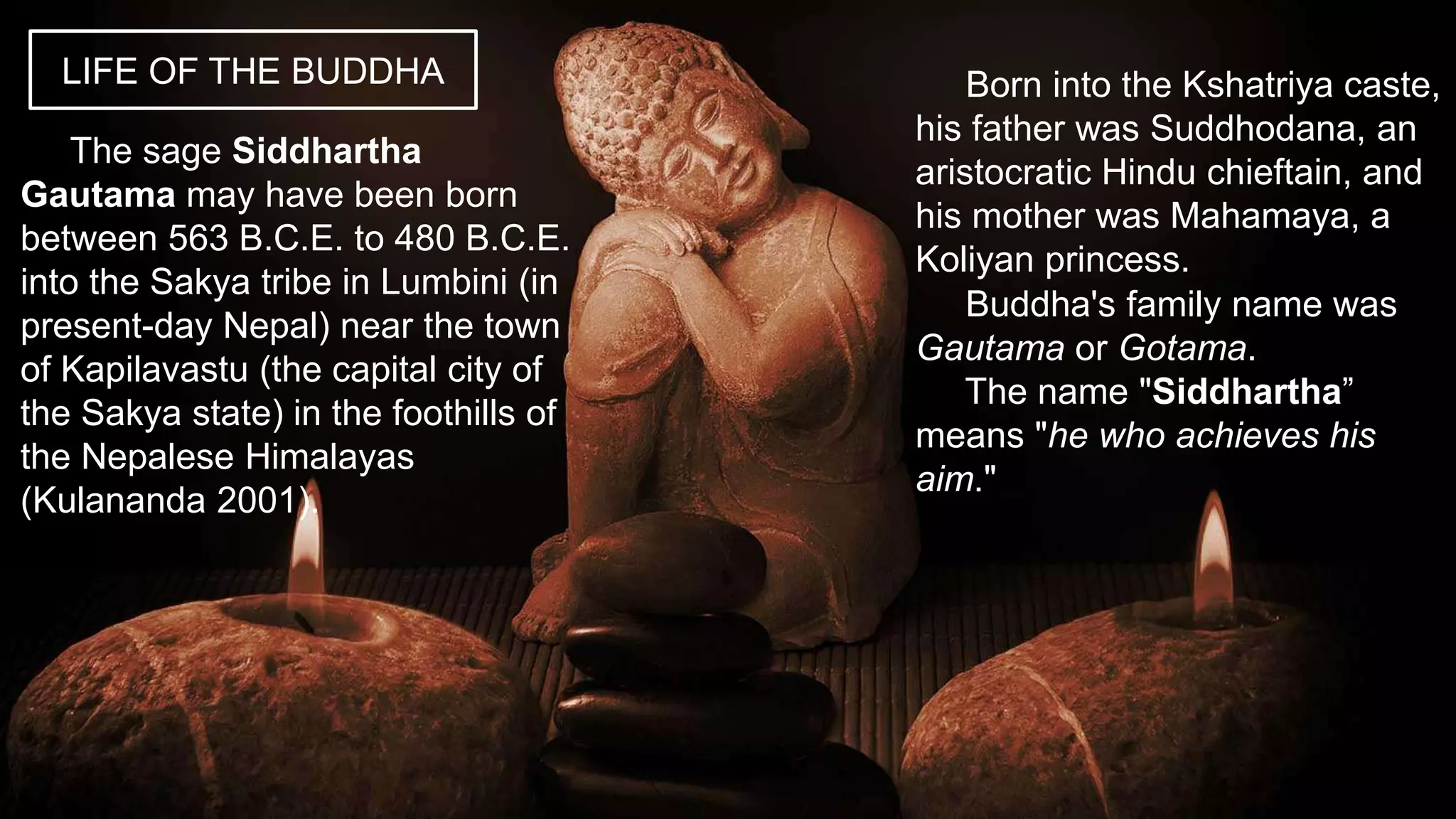Theravada Buddhism is a major branch that draws from the oldest Buddhist texts. It originated from the teachings of Siddhartha Gautama, who was born in Nepal and attained enlightenment under a bodhi tree. His key teachings included the Four Noble Truths about dukkha (suffering), its causes, its cessation, and the path to its cessation. Theravada Buddhists follow the Pali Canon scriptures and believe in impermanence, anatta (no soul), and dependent origination.
















































